RockShox Pike - 2018 Fork with Charger 2 Damper
(discontinued)
| Where To Buy | |||
|---|---|---|---|
Free shipping on orders over $50 (continental U.S. only).
International shipping available. Some exclusions apply. |
Free shipping on orders over $50 (continental U.S. only).
International shipping available. Some exclusions apply. $47.59
|
||
Free shipping on orders over $50 (continental U.S. only).
International shipping available. Some exclusions apply. |
|||

"How easy is it to take the RockShox Pike for granted now? We would’ve killed for this fork eight years ago and now it goes by with a simple sentence or two of gratitude. Thanks Pike, you changed the game and we’re better for it." - Mint Henk, Vital MTB Test Sessions Rider
Originally launched in 2013, the RockShox Pike instantly set the benchmark for single-crown fork suspension performance and elevated the capability of every bike it was mounted to. At the time, 26-inch wheeled bikes were still king. Since then we've witnessed a massive shift in trail bikes with even budget builds and short-travel rippers bringing an insane amount of capability to the table.
Over the years the fork has filled a void for everyone from cross-country rippers to enduro racers and freeriders, though RockShox has since introduced category-specific forks like the Lyrik based around many of the same technologies found in the Pike. With several high-performance forks to choose from, today RockShox narrows the focus of the Pike on the aggressive trail bike rider with an all-new lighter chassis design, updated Charger 2 damper, and more supple DebonAir air spring. Pretty much everything but the bottom bolts and axle is new, and several of the updates are making their way into RockShox's other forks. Let's dive in...

Lighter Chassis, Same Stiffness
Recognizing that the fork was a little heavy for its intended use, when Jon Cancellier, RockShox Product Manager, set out to redesign the Pike, he gave RockShox engineers the task of reducing the weight of the fork by 150 grams (0.33 pounds). The real challenge? Doing it without sacrificing chassis stiffness or ride quality.
Through a combination of a slimmer, more sculpted damper and tweaks to the crown, steerer, lower leg, and air spring they pulled it off. And that's with slightly heavier upper tubes. The new, lighter Pike tests to within a percentage point of the stiffness offered by the previous Pike with a 15x110mm Boost axle.
We didn't want to make the lightest 35mm fork we could. We wanted to make a lighter Pike that rides like the old Pike.
Part of the lightening equation had to do with narrowing the focus a bit, which is a theme you'll see carried through all of the updates to the Pike. In that light, the fork is now offered in a maximum of 140mm travel for 29-inch wheels and 160mm in 27.5 versions. The new 2018 Revelation fork makes use of a very similar 35mm chassis. Riders wanting more travel will need to opt for burlier Lyrik or Yari forks, which also receive a chassis update for model year 2018.


Updated, Easier to Service Charger 2 Damper
Quietly introduced alongside the new SID fork in 2016, RockShox's new Charger 2 damper design looks to dial in damping and ride characteristics.
With a huge number of Pike forks in use everyday since its launch in 2013, RockShox has received a ton of feedback from riders over the years with regards to how it rides, which tuning features they use often, and which features they don't. It turns out relatively few riders used the 'Pedal' or 'Lock' settings on the RCT3 model. With that knowledge they chose to do away with the lockout mode and replace it with a 'Firm' setting, eliminating some design compromises along the way.

"We feel there are benefits to having compliance at the front wheel while locked out on a trail/enduro fork versus a XC fork that is desired to be rock hard," Cancellier told Vital. "We can also bias the damper towards 'Open' mode performance where before we also had to tune for a rock-solid lockout."
The 'Firm' setting is now a better match with RockShox's Super Deluxe and Monarch Plus rear shocks, and still resists bobbing for big out-of-the-saddle pedaling efforts. Where the previous design essentially smashed a large spring and plate down to shut off oil flow and create the lockout, the new one relies on hydraulic pressure to create more resistance. As you can see in the video demonstration below, in the 'Firm' setting oil flow is directed through several small holes under an o-ring and into what RockShox is referring to as a "lockout cup" instead of the new hourglass-shaped bladder. This cup increases the diameter of the pivot shim on top of the shim stack, making it harder for the shims to flex.
The middle 'Pedal' compression setting is good for smoother, more flowy trails. As shown in the video, it firms the fork up and helps the bike stand a little taller by driving the low-speed compression needle down to lessen oil flow.
Many will also be pleased to know that the fork now provides a wider range of 'Open' mode low-speed compression adjustment, offering more support for hard-charging or heavy riders. Damper architecture is similar to the previous version on the rebound side, including the use of Rapid Recovery.

Another convenient update is to the bleed location, which is much lower on the cartridge and uses a Reverb fitting. Where you used to have to pull knobs, a snap ring, and plug off before bleeding from the top, you can now pull the entire damper for a quick bleed with no need to mess with adjusters. The oil path is also improved for getting bubbles out. RockShox will offer service kits containing only the parts you need based on recommended service hour intervals.
With a goal of having a common damper platform across their line of forks (and in turn, common parts), you'll also see new purpose-tuned versions of the Charger 2 damper integrated into the Lyrik and RS-1 moving forward.
Remote Compatible
A big reason why RockShox started down the Charger 2 path was the need for remote compatibility as some riders want to be able to control their fork settings from their handlebars. Anyone who has turned the lockout knob on the old Pike will know that it took a lot of effort to do so, which made the fork incompatible with remotes.
Since the 'Firm' mode is now hydraulically assisted, the new knob is much easier to turn and RockShox will offer cable-actuated OneLoc remote options for both Pike and Lyrik RC and RCT models.
Charger 2 upgrade kits will also be available to fit the majority of existing 35mm forks. They'll run $240 US for non-remote kits and $300 for those looking to take advantage of a remote.
More Supple DebonAir Air Spring
Much like how the Monarch Plus rear shock was improved with a larger negative air spring on the Monarch DebonAir, RockShox applied a similar concept to the new Pike. Though RockShox never made a fuss about it, the concept was actually implemented into the Lyrik a few years ago to create a more supple downhill ride feel.
While the parts themselves look similar, moving forward SoloAir is now DebonAir and air spring volumes have been tweaked to provide more supple off-the-top action. The old Pike "was more on the XC side of things in terms of ride quality," Cancellier said, and the new Pike air spring moves to the even more supple, active side. RockShox tunes the negative volume based on the intended application. It's not "super plush" like the Lyrik, however, as they don't want to use up too much travel or have you sit into it too far. The Lyrik will also get a small negative air spring increase.



Increasing the negative air volume not only helps with small bump performance, but also benefits mid-stroke support by straightening the end of the spring curve and making the fork more coil-like. DebonAir makes its way into the Pike, Revelation, Lyrik, and Yari forks. Dual Position Air versions will not see a similar change in the near future.
Improved Tire Clearance, Boost Only, and Other Key Updates
Tire clearance has been massively improved, providing room for a big tire and a fender with plenty of room for mud. To some extent this future-proofs the fork as the tire game is currently in a state of flux. Up to a 2.8-inch tire on an appropriate rim will fit. This means you no longer need to run a 29-inch fork for 27.5+ tires, and bike designers can build frames around 27.5 axle-to-crown heights and not jack the front end up so much. The same clearance will be added to Revelation, Lyrik, and Yari forks.

The new Pike, Revelation, and updated Lyrik/Yari will only be offered in the new 15x110mm Boost axle width. RockShox's design goals were only achievable by setting restrictions. They will continue to sell 15x100mm non-Boost Pike, Lyrik, and Yari forks for some time, though they won't receive the same damper updates, new graphics, etc.
We can build a better fork by making a Boost-only fork. We understand that it isn't going to work for everybody, but it's coming fast.
By moving to a 180mm direct brake mount on the Pike, Revelation, Lyrik, and Yari fork, RockShox eliminated some hardware and saves you a little more weight.

In addition to new adjustment knobs, you'll find new air spring and damper top caps on the Pike that use a cassette tool for installation and removal. This cleans up the fork's appearance and is less prone to stripping thanks to a more secure tool interface.
Influenced by a few key frame manufacturers who wanted additional offset, the stock 27.5-inch Pike, Revelation, Lyrik, and Yari forks will now have a 46mm offset versus the previous 42mm. 29-inch models go unchanged at 51mm. Increasing offset speeds up handling and gives more of an instant effect on the wheel. Watch for additional shorter offset options to come later this year on new bike models that experiment with geometry (hint, hint).
Finally, when questioned about quality control, consistent tolerancing, bushing alignment, and the like, RockShox stated that they now have a "laser focus" on ensuring consistency between each fork that comes off the assembly line.
On The Trail
Do all the updates truly add up to a better ride experience? Last month Vital was given the opportunity to ride the new fork in Moab, Utah. Having ridden a 130mm travel 29-inch Pike on a Transition Smuggler test bike for several months prior, a Trek Fuel EX 29 prepared by RockShox would serve as a great ride for a comparison with identical front travel.
Prior to heading out for a test lap on the notoriously rough and fun Captain Ahab trail we set the air pressure to the suggested 85psi for a 180-pound rider. Rebound was set to feel and low-speed compression was dialed in several clicks. No change was made to the Bottomless Token count.

Pedaling to the top, we immediately noticed an improvement in off-the-top feel. The fork fluttered smoothly over Moab's ledgy terrain, keeping the wheel on the ground and doing a great job of not throwing off our balance through hundreds of varied undulations.
Pointed downhill there was no discernible difference in chassis feel. It's just like the Pike of old, only a tad lighter. We experienced no odd binding issues while placing the front end into some very awkward holes.


The new DebonAir air spring continued to impress by smoothing out the small to medium stuff, with the fork riding in the upper portion of the travel most often. With the previous Pike we typically added two Bottomless Tokens to the stock setting to provide adequate bottom-out support. With the new Pike we were surprised to find no need for modification from the stock air spring configuration. It turns out that RockShox also hit the reset button on their positive air spring volume and pressure recommendations.
The most notable on-the-trail improvement is a more supple feel, and the stock settings are now spot-on for the aggressive trail rider without the need for an exhaustive tuning process.
Cancellier acknowledged our findings, stating, "We want people to just jump on and have a good ride experience from the get-go." In an effort to give riders a close to ideal setup right off the bat, RockShox spent a lot of time and effort to adjust their recommendations to be a more accurate representation of where people are actually riding their Pike forks. As trail bikes have become more capable and riders have become increasingly confident in their equipment, speeds and riding styles have become more aggressive. While entry level and some intermediate level riders may struggle to get full travel at the suggested setting, we found it to be an excellent starting point and only bottomed once off the optional bonus left drop line 3/4 of the way down Captain Ahab.
As further verification, an attached Quarq ShockWiz suspension tuning device scored the initial settings very highly at 96 out of 100 with no suggestions for air spring adjustments. In short, RockShox nailed it.

Followup rides on Amasa Back, Jackson's, and Porcupine Rim went very well. The fork provides plenty of support when needed, smooths out the roughest bits, and kept our hands and forearms feeling fresh during the fastest lap we've ever done on Porcupine.
Switching the fork to the 'Pedal' and 'Firm' compression modes firmed things up as expected, but remained more supple over small bumps than the previous Pike for added control. It paired well with same modes on the Trek's Deluxe rear shock, keeping the bike nicely balanced.
We'll put the fork through a long-term test in the future.
What's The Bottom Line?
While all-new, the RockShox Pike provides a similar ride to the one you've come to know and love - and that's a good thing. The most notable on-the-trail improvement is a more supple feel, and the stock settings are now spot-on for the aggressive trail rider without the need for an exhaustive tuning process. We also appreciate the added compression adjustment range, improved tire clearance, and remote compatibility.

Complete Model Year 2018 Fork Specs, US Pricing, and Availability


- Pike: $875-$1,000
- Revelation: $650-$720
- Lyrik: $1,030-$1,180
- Yari: $700-$780
- RS-1: $1,680-$1,750
The new Pike and RS-1 will be available in April 2017, with Revelation, Lyrik, and Yari models following shortly after in May. Visit www.rockshox.com for more details.
About The Tester
Brandon Turman - Age: 30 // Years Riding MTB: 16 // Height: 5'10" (1.78m) // Weight: 175-pounds (79.4kg)
"I like to have fun, pop off the bonus lines on the sides of the trail, get aggressive when I feel in tune with a bike, and really mash on the pedals and open it up when pointed downhill." Formerly a Mechanical Engineer and Pro downhill racer, Brandon brings a unique perspective to the testing game as Vital MTB's resident product guy. He has on-trail familiarity with nearly every new innovation in our sport from the past several years and a really good feel for what’s what.
Specifications
RCT3: external rebound, low speed compression (in open position), 3-position compression (open, pedal, firm), OneLoc Remote optionwith 2-position compression (open/firm)
Magnesium lowers
Offset: 46mm (27.5"), 51mm (29")
Maxle Ultimate and Maxle Stealth axle options
Torque Cap compatible
Printed air pressure guide on fork leg
Sag gradients on fork stanchion
Air spring curve may be tuned by adding or removing Bottomless Tokens
Maximum tire width: 27.5" x 2.8" (27.5" version)
Maximum tire width: 29" x 2.8" or 27.5" x 3.0" (29" version)
| Where To Buy | |||
|---|---|---|---|
Free shipping on orders over $50 (continental U.S. only).
International shipping available. Some exclusions apply. |
Free shipping on orders over $50 (continental U.S. only).
International shipping available. Some exclusions apply. $47.59
|
||
Free shipping on orders over $50 (continental U.S. only).
International shipping available. Some exclusions apply. |
|||






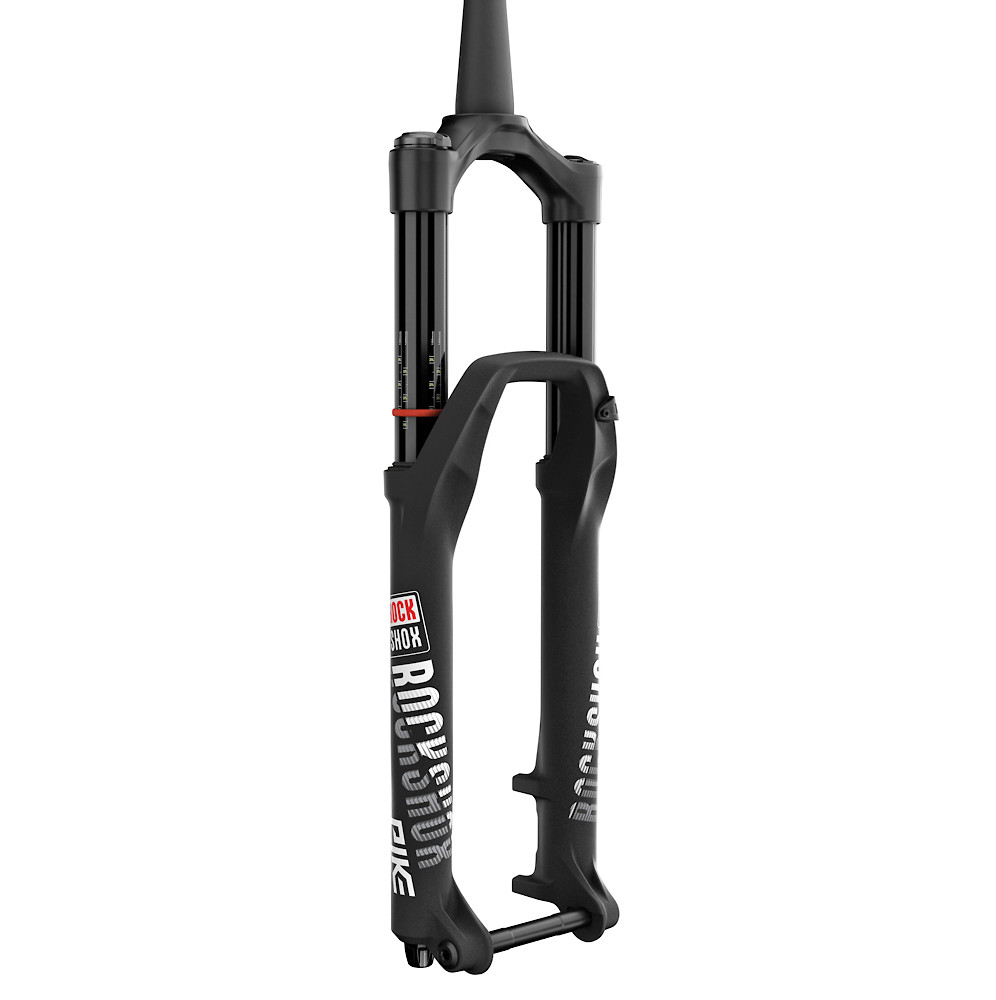
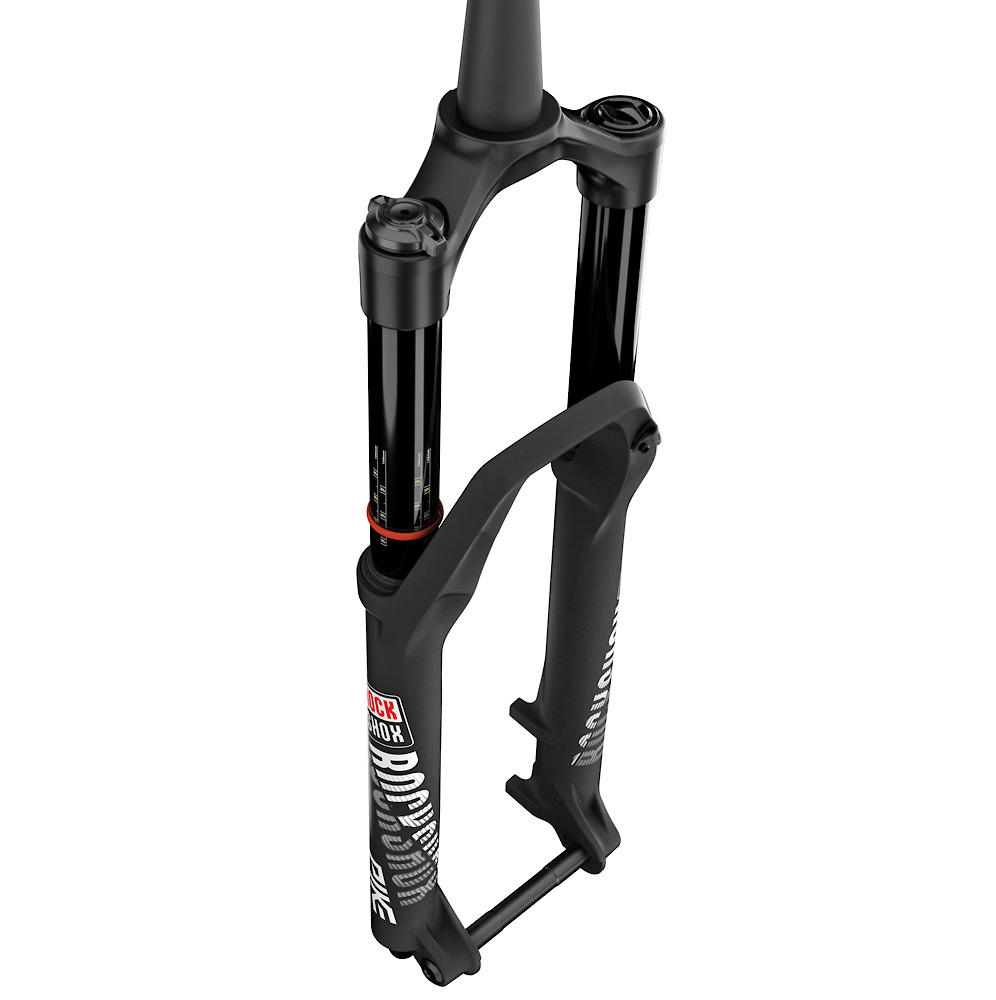



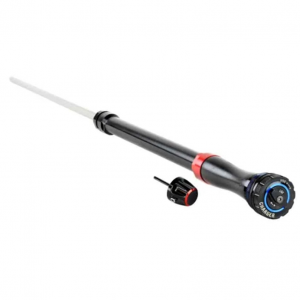
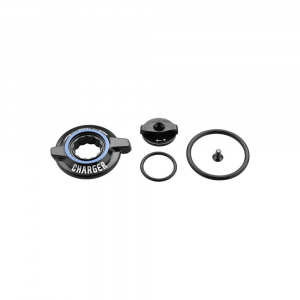
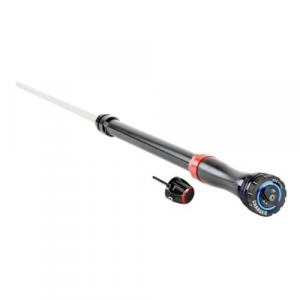
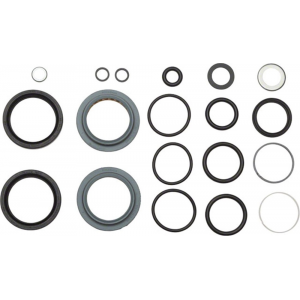
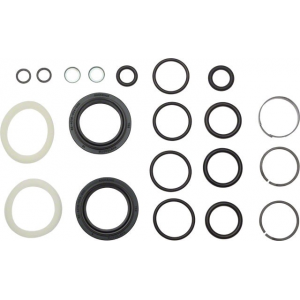
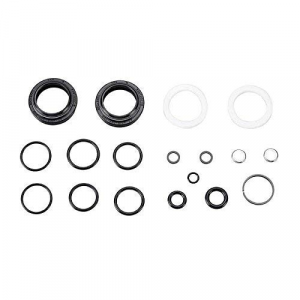

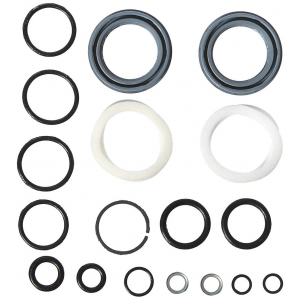
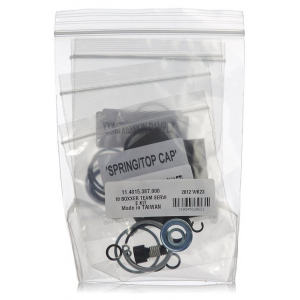
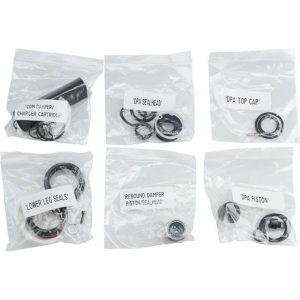
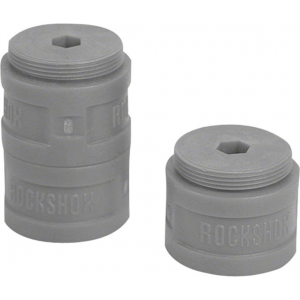
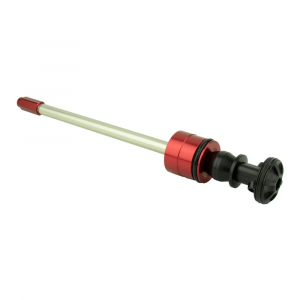



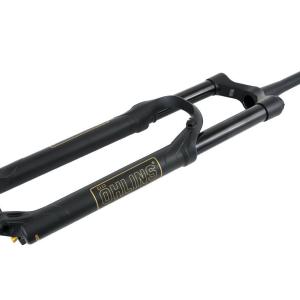
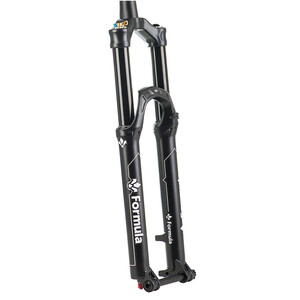
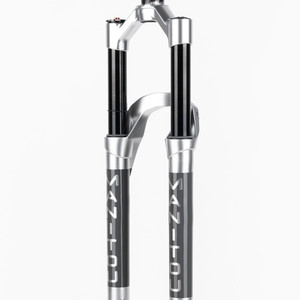


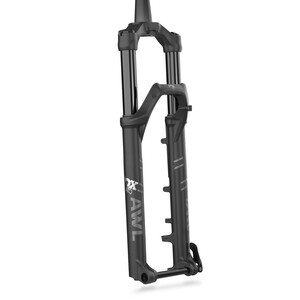






7 comments
Post a reply to: First Look, First Ride: All-New 2018 RockShox Pike Fork and Char